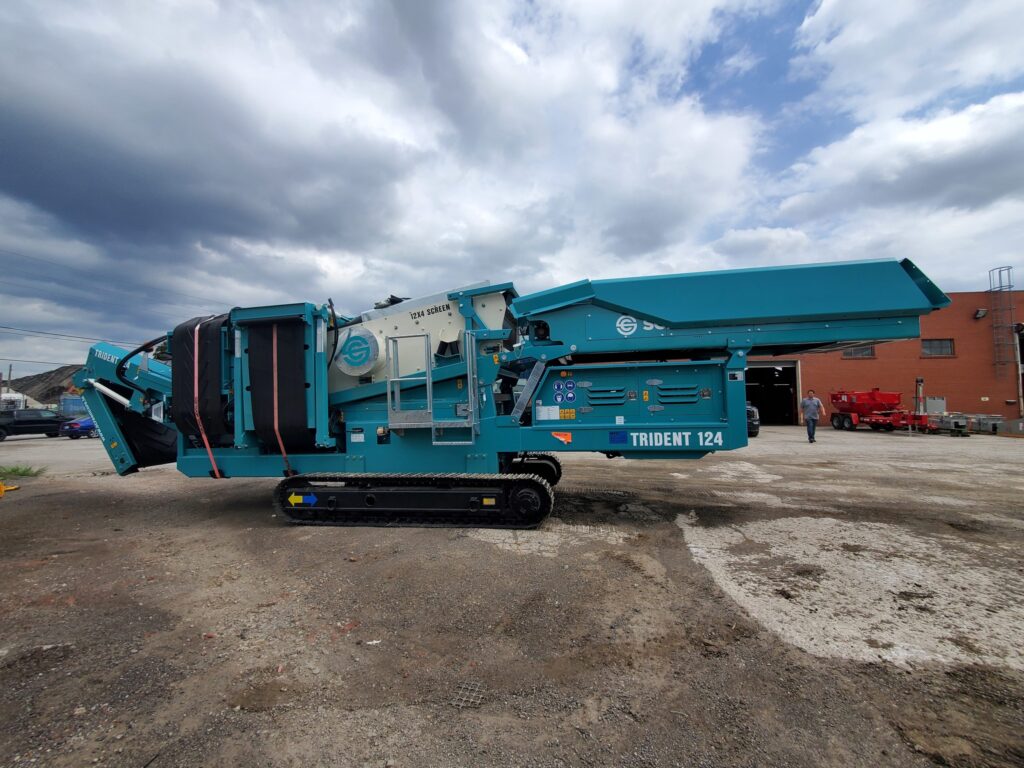In the fast-paced world of heavy construction, every second counts – the last thing any business needs is an unexpected breakdown. These not only lead to expensive repairs but can lead to downtime that is potentially even more damaging, affecting project timelines, customer satisfaction, and, ultimately, your bottom line.
Screeners play a vital role in numerous industries. Its ability to effectively separate materials significantly impacts the efficiency of your operations. Therefore, keeping it in excellent working condition is paramount. Regular maintenance and prompt repairs not only prolong the machine’s lifespan but also ensure that it performs optimally, helping you to get the job done right the first time.
Like all machines, a vibrating screen will operate longer and perform better when serviced properly. To help you manage this, we’ve put together tips and areas to prioritize when performing vibrating screen maintenance.
The Importance of a Preventative Maintenance Schedule
Whether you’re in the business of mining, aggregates, or recycling, your screener is the heart of your operations. Its continuous and often rigorous operation can subject it to wear and tear, affecting its performance, efficiency, and lifespan. To ensure your equipment remains in good condition, creating and adhering to a preventative maintenance schedule is crucial.
Equipment Reliability:
A well-maintained machine is a reliable machine. Regularly scheduled maintenance activities can prevent unforeseen breakdowns, keeping your operations running smoothly and consistently.
Cost Savings:
While it may seem like an added expense, preventative maintenance can save you a significant amount of money in the long run. It helps avoid sudden, costly repairs or replacements, reducing operational costs.
Extended Lifespan:
Just like regular servicing can extend the lifespan of your vehicle, consistent maintenance can prolong the operational life of your screener, negating the need for costly replacements.
Safety Assurance:
Safety should always be a top priority in any operation. Regular inspections and maintenance ensure that all safety features are in working order, fostering a safer working environment.
Compliance with Regulations:
Industry regulations exist for a reason. Adhering to a maintenance schedule not only ensures your machinery is operating at peak performance but also helps you meet these regulations.
Optimal Performance:
To guarantee accurate and consistent screening results, routine maintenance is essential. It ensures your screener continues to perform at its best, maintaining high productivity levels.
Minimized Disruptions:
By planning maintenance activities, you can avoid unexpected breakdowns, which cause disruptions.
Documentation:
A maintenance schedule provides a valuable record of equipment performance, enabling better decision-making about future investments or operational adjustments.
Implementing a preventative maintenance schedule is not just an action; it’s an investment in the health of your business.
Keeping Your Screener in Top Shape: Areas to Monitor
Ensuring that your screener is running efficiently requires attention to detail. By regularly inspecting specific parts and promptly addressing issues, you improve the performance, reliability, and lifespan of your machinery. Here are some critical areas to focus on:
Springs
Springs play a crucial role in the operation of your screener, enabling it to shake effectively for optimal screening. It’s important to measure your springs and check these measurements against the Original Equipment Manufacturer’s (OEM) tolerances. Worn springs may hinder the screener’s movement, resulting in slower screening. If you find your springs to be out of tolerance, it’s recommended to replace all springs as a complete set to ensure consistent quality and performance.
Crown Bars
The crown bars on your screener decks have a direct impact on screening efficiency. Ensure that there’s a proper, continuous crown on all decks of your screen. If your crown bars require repair, follow the proper crown bar heights as indicated in your machine’s manual in the OEM guidelines. Also, inspect the cross member frames for damage or cracks regularly. Addressing these can prevent the pan sides from cracking and save you from a complete screen replacement.
Screen & Screen Media Hardware
The condition of your screen and its hardware significantly influences the screener’s output. Regularly inspect and tighten bolts to maintain the structural integrity of your screener. Examine the screen media for proper tension, damage, and tears, adjusting or replacing it as necessary.
If the clamp bars are showing signs of caving in or the metal is wearing down, replace them to extend the wear life of your screen media. For even longer wear life, consider using rubber or urethane-coated clamp bars, which offer resilience and durability.
Standard Preventative Maintenance
Alongside these checks, remember to follow standard preventative maintenance procedures. Clean and lubricate parts like conveyor belts regularly to reduce wear. Inspect these belts for proper tension and damage, replacing them if necessary.
Be consistent in changing the oil and replacing filters if the bearings are oil baths. Apply grease on the recommended schedule and temperature, typically at the start of the day when bearings are cool.
The electrical and hydraulic systems also require regular inspection. Any issues found should be promptly repaired and adjusted to prevent larger problems down the line.
By closely monitoring these areas and following standard preventative maintenance procedures, you can greatly enhance the performance and longevity of your screener.
For more help on how to build a quality preventative maintenance schedule, visit our service page. Our technicians are trained to help with heavy equipment repair for your equipment, and complete affordable, regular maintenance for heavy construction machinery.
- 8 Questions To Ask When Buying Used Aggregate Equipment - June 16, 2025
- 5 Key Steps to Choosing the Right Curb Machine for Your Fleet - October 22, 2024
- 5 Tips for Purchasing Used Excavating Equipment in Ontario - September 26, 2024


